A Comprehensive Exploration of 'Hellsing Ultimate' Episodes
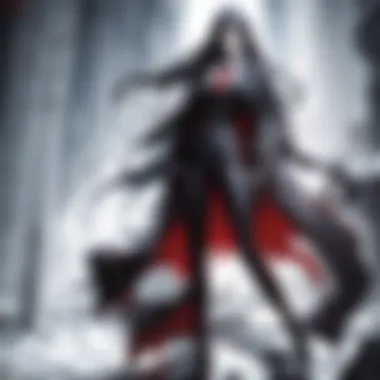
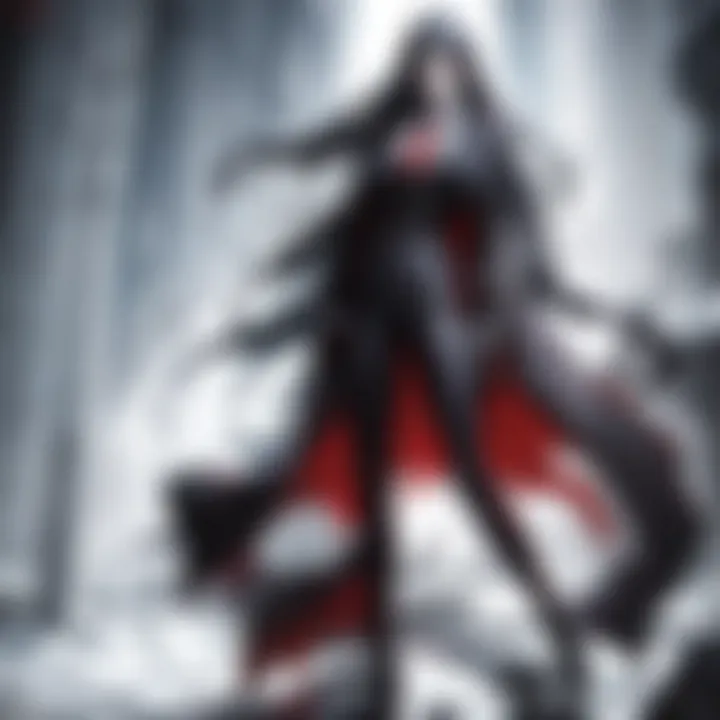
Intro
In the realm of anime, few titles resonate as strongly as Hellsing Ultimate. Adapted from Kouta Hirano's manga, this series offers a unique blend of horror, action, and intricate storytelling. Each episode deepens the narrative, expanding on themes both dark and thought-provoking. Understanding Hellsing Ultimate requires a keen look at its core elements, including character development, thematic richness, and artistic choices that shape the viewer's experience.
Series Overview
Synopsis and Premise
Hellsing Ultimate follows the clandestine Hellsing Organization, dedicated to protecting England from supernatural threats, particularly vampires. At the center of this struggle is Alucard, a formidable vampire serving the Hellsing family, alongside Sir Integra Hellsing and her loyal allies. This adaptation remains true to the manga's source material while exploring complex relationships and moral ambiguities faced by the characters.
Notable Characters
Several characters stand out within this narrative:
- Alucard: The ultimate vampire and Hellsing's ace weapon. His past and motivations are central to the plot.
- Sir Integra Hellsing: The determined leader of the Hellsing Organization. Her resolve drives the story forward.
- Seras Victoria: A former police officer turned vampire. Her journey encapsulates the struggles of accepting a new identity.
Themes and Motifs
Major Themes Explored
Hellsing Ultimate is layered with themes such as:
- The nature of evil: Examining what constitutes good and evil.
- Identity and transformation: Characters grapple with their new realities.
- Redemption: The quest for atonement plays a pivotal role, especially for Alucard.
Symbolism in Storytelling
Symbolism enriches the narrative. For instance, Alucard's design and abilities symbolize the conflict between humanity and monstrosity. The recurring imagery of crosses and religious motifs highlights a battle of faith and power, further enhancing the narrative's depth.
Artistic Style and Animation
Visual Aesthetics and Design
The art style of Hellsing Ultimate stands out with its dark, gothic aesthetic. Character designs are sharp, and the environments reflect a haunting atmosphere. Backgrounds often evoke the haunting presence of the supernatural world.
Animation Techniques and Trends
The animation in Hellsing Ultimate is noteworthy. It showcases fluid movements during action scenes while maintaining a detailed approach in quieter moments. This technique elevates the intensity of fights and conveys the emotional weight of the narrative.
"The effectiveness of animation in bringing characters to life cannot be understated. The meticulous attention to detail in every frame enhances the overall viewing experience.”
Prolusion to Hellsing Ultimate
In the landscape of anime, Hellsing Ultimate holds a prominent position that invites scrutiny and appreciation. The series offers a unique blend of supernatural elements, engaging narratives, and complex characters. This article aims to articulate the significance of Hellsing Ultimate within the broader context of the anime industry, while also dissecting its themes, characters, and production details.
The intricacies of the storyline reveal a rich universe deeply rooted in vampire lore and gothic traditions. Understanding this foundational layer sets the stage for exploring deeper elements of the narrative. Within this context, the subsequent sections will provide a thorough examination of the franchise's evolution, the historical influences shaping its creation, and the key thematic explorations presented throughout the episodes.
Overview of the Hellsing Franchise
The Hellsing franchise originated from Kouta Hirano's manga series, which debuted in 1997. This manga introduced readers to a world where vampire hunters face a multitude of supernatural threats. The franchise's central figure is Sir Integra Hellsing, head of the Hellsing Organization, tasked with eliminating vampires and other creatures that threaten humanity.
The manga's success led to numerous adaptations, with Hellsing Ultimate being one of the most notable. This OVA series consists of ten episodes that closely follow the manga's storyline, allowing for a more faithful representation of Hirano's original vision. Unlike the earlier Hellsing anime adaptation, which diverged significantly from the source material, Hellsing Ultimate gains praise for its commitment to staying true to its roots, thus fulfilling the expectations of both new viewers and manga fans alike.
Historical Context
The historical context surrounding the creation of Hellsing Ultimate enhances its narrative richness and depth. The late 90s and early 2000s saw a resurgence in vampire mythos within popular culture. Literature, film, and television showcased vampires in new lights, often exploring themes of morality and identity.
In Japan, the interest in gothic styles and horror elements aligned with these trends, making the release of Hellsing exceptionally timely. The OVA adaptation began in 2006, which coincided with the global fascination for anime and manga, making it appealing to a broad audience.
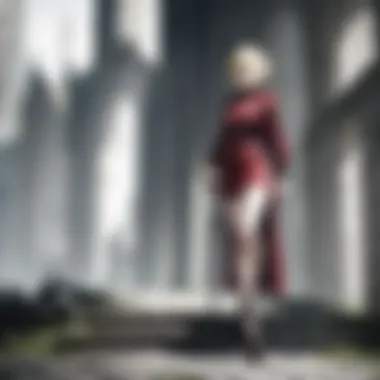

The Hellsing universe is heavily influenced by European mythology and folklore. The incorporation of various historical elements—ranging from the Crusades to the World War era—adds layers to the character development and plot. This historical grounding allows the narrative to resonate with viewers, offering a blend of fantasy and relatable human experiences.
Overall, the Hellsing Ultimate series serves a vital role not just as entertainment but as a commentary on historical narratives interwoven with fantastical elements. This provides fertile ground for the examinations to follow in the article.
Production Details
The production details of Hellsing Ultimate are crucial for understanding its overall appeal and quality. By examining the studio's choices, animation techniques, and voice performance, one can appreciate how these elements contribute to the uniqueness of the series. Such insights provide context for both the artistic decisions and the technical capabilities that bring this adaptation to life.
Studio and Direction
Hellsing Ultimate was produced by Geneon Entertainment and later by Funimation, which are renowned for their work in the anime industry. The series was directed by Tomokazu Tokoro, who has had substantial influence in shaping the tone and pacing of each episode. Under his direction, the adaptation remained faithful to Kouta Hirano's original manga, ensuring that the series retains its dark atmosphere and intense storytelling.
Moreover, the involvement of a dedicated production team behind the scenes contributed significantly to the quality of the anime. The studio's commitment to maintaining high production values is reflected in the character designs and background artwork, which stays true to the gritty aesthetic of the manga. This respect for the source material plays a significant role in the anime's appeal to fans.
Animation Techniques
The animation techniques utilized in Hellsing Ultimate distinguish it from many other anime series. The staff employed a mix of traditional 2D animation with advanced computer-generated imagery to create a visually striking experience. The action sequences, in particular, are choreographed meticulously, showcasing fluid movements that enhance the impact of combat scenes.
The series also makes use of dramatic lighting and color palettes that evoke a foreboding presence, setting the tone effectively for the supernatural elements in the story. Attention to detail in character expressions amplifies emotional moments, allowing viewers to engage more deeply with the characters' struggles and triumphs.
Voice Acting and Performance
Voice acting is another significant aspect of Hellsing Ultimate. The cast includes prominent voice actors such as Bruce Crawford as Alucard and Jad Saxton as Seras Victoria. Their performances contribute to the overall depth of the characters, helping to convey complex emotions and motivations. This is particularly important for a series steeped in dark themes and moral ambiguity.
The actors' ability to bring life to their characters is enhanced by a well-crafted script that allows for dynamic interactions. The strong performances resonate with audiences, creating memorable moments throughout the series.
"The voice acting in Hellsing Ultimate enhances the emotional layers of the narrative, making it more than just a story about vampires; it becomes a reflection of human complexity."
Episode Summaries
Episode summaries play a pivotal role in understanding the intricate narrative structure and character arcs of 'Hellsing Ultimate'. They serve as a guide that captures the essence of each episode while allowing viewers to follow the evolution of the story and its characters. The importance of these summaries lies in their ability to distill complex storylines into manageable segments, providing clarity and facilitating deeper analysis. Such clarity is vital for readers who are analyzing the series for its thematic depth or character development. By summarizing the episodes, one can focus on specific elements that thread through the series, observe character transformations, and track the thematic motifs that recur over time.
First Episode: An Foreword to Alucard
The first episode introduces Alucard, a vampire bound by loyalty to the Hellsing Organization. This episode sets the tone for the series, showcasing the blend of action and horror that characterizes 'Hellsing Ultimate'. Alucard’s complex nature is explored as he engages in the opening battle against a fledgling vampire. The viewer witnesses not just his immense power but also his grim demeanor, emphasizing the series' darker themes. The initial interactions among characters let viewers grasp their initial motives and positions within the organization. This first episode establishes critical groundwork for understanding the larger narrative.
Subsequent Episodes Breakdown
Episode highlights
The episode highlights serve as a crucial aspect of 'Hellsing Ultimate'. They emphasize key moments that resonate throughout the series. These highlights often indicate turning points or climactic battles that move the narrative forward. What makes them effective is their ability to distill significant content into an easily digestible format, ensuring viewers can quickly remember essential plot points. They present captivating scenarios that showcase character abilities, moral conflicts, and the stakes involved. However, focusing solely on highlights may lead to losing deeper context within the episodes themselves.
Character introductions
Character introductions are integral to the series and its episode summaries. They provide viewers with brief snapshots of the main and supporting characters, enriching the overall narrative. Each introduction paints a picture of a character's background and their role in the storyline. This feature is beneficial because it creates a foundational understanding for audiences, especially for newcomers. Yet, there is a risk of oversimplifying characters, which can diminish the richness of their development as the story unfolds. Familiarity with these introductions enhances the viewing experience, allowing for greater engagement with the series.
Plot development
Plot development is another critical area discussed in the episode summaries. Each episode builds on preceding events, leading to an intricate tapestry of conflict and resolution. The development arcs of various characters and the broader narrative are explored, which sheds light on the motivations behind their actions. This focus on plot development not only clarifies the story’s progression but also highlights thematic elements that are pivotal to the series. While plot summaries are essential, the challenge lies in balancing brevity with depth, ensuring that critical story elements are not lost in the process.
Overall, the episode summaries offer a structured approach to analyzing 'Hellsing Ultimate'. They align the series' many themes and character arcs, helping the audience navigate its complex narrative landscape.
Character Analysis
Character analysis is central to understanding the deeper layers of Hellsing Ultimate. This section examines key figures in the series, highlighting their motivations, relationships, and evolutions. Characters serve as conduits for themes, embodying the struggles and ideals presented throughout the story. By analyzing character arcs, readers gain insight into the narrative’s complexity and emotional weight. This exploration is not just about individual stories; it reflects broader themes such as power, humanity, and sacrifice.
Alucard: The Eternal Vampire
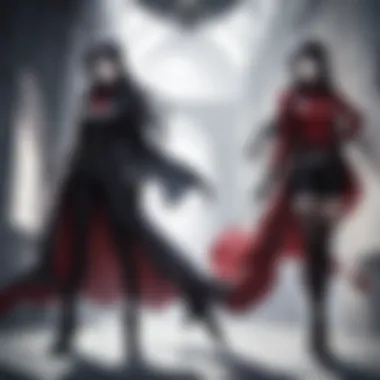
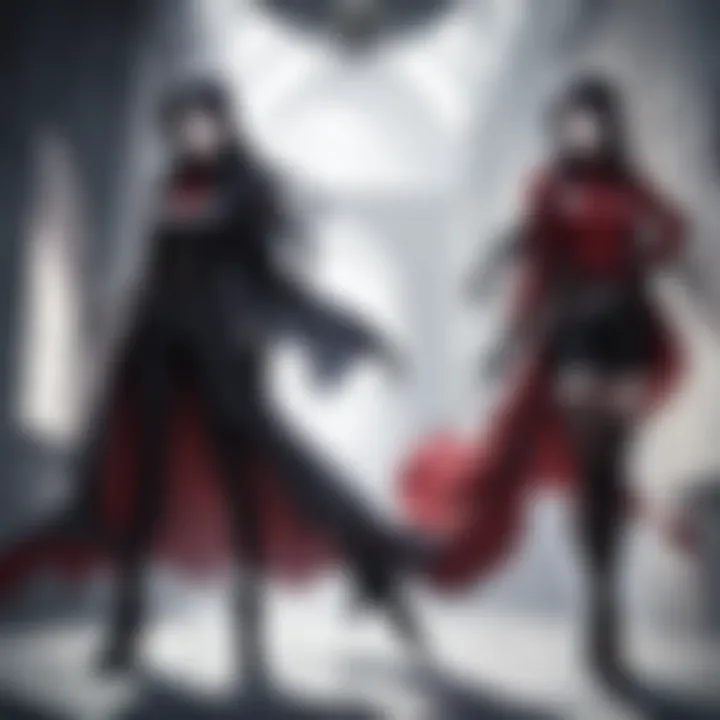
Alucard stands as the enigmatic protagonist of the series. His character is a profound exploration of immortality and the burdens it carries. As a vampire with unparalleled power, Alucard is not merely a weapon; he is a reflection of humanity's darkest impulses. His relationship with Integra Hellsing highlights themes of loyalty and servitude. Alucard's past and his choices force viewers to confront the duality of his nature. This makes him one of the most compelling characters in anime.
Integra Hellsing: The Resolute Leader
Integra represents strength and determination. As the leader of the Hellsing Organization, she balances authority with vulnerability. Her commitment to eradicating supernatural threats reveals a sense of duty that drives much of the plot. Integra’s leadership style contrasts with Alucard’s chaotic nature, creating dynamic interactions that elevate the narrative. Through her, the series examines the consequences of power and the sacrifices demanded from those who wield it.
Seras Victoria: The Reluctant Recruit
Seras Victoria embodies the struggles of adaptation. Transitioning from a human to a vampire, her character arc delves into identity and acceptance. Initially hesitant, Seras grows into her role, highlighting personal growth amidst chaos. Her experiences offer a counterpoint to Alucard's immortality; she grapples with the loss of her past while embracing a new purpose. Seras’ story serves to humanize the often detached world in which she exists.
Supporting Characters: A Diverse Cast
The supporting characters in Hellsing Ultimate enrich the storyline through their unique backgrounds and motivations. Each character contributes to the overarching themes of the series, offering different perspectives on the conflict. From the skilled agents of the Hellsing Organization to formidable adversaries, these characters create a tapestry of interactions that deepen the story.
- Father Alexander Anderson: A nuanced antagonist who questions faith and violence.
- Luke Valentine: A representation of ambition, his rivalry with Alucard provides thrilling dynamics.
- Walter C. Dornez: His transformation and loyalty add layers to the Hellsing Organization's inner workings.
The interplay between these characters not only drives the plot but also enriches the viewer's understanding of the world. Their diverse traits and backgrounds illustrate the multifaceted nature of the battle between humanity and monstrosity.
Themes and Motifs
In 'Hellsing Ultimate', themes and motifs play a crucial role in enhancing the narrative's depth. The series utilizes these elements not merely as backdrops but as vital components that shape character motivations and plot developments. Understanding these themes allows the audience to grasp the weight of the characters' actions and the philosophical questions the story poses.
Exploring the Nature of Humanity
One prevalent theme in 'Hellsing Ultimate' is the exploration of humanity itself. The series raises important questions about what it means to be human. Through the character of Alucard, a vampire grappling with his own identity, we see a relentless struggle between his monstrous nature and any remnants of his former self. His actions often starkly contrast with those of human characters, challenging the audience to reconsider the definition of humanity. This portrayal pushes the viewer to think about notions of morality, compassion, and the capacity for evil within all creatures.
Another key figure in this exploration is Seras Victoria. As a newly turned vampire, her journey reflects the complications of maintaining one's humanity amidst a monstrous transformation. Her character arc shows the struggle between embracing her new identity and holding onto her past.
"The boundaries between human and monster blur significantly as characters face the consequences of their choices."
The Ethical Dilemmas of Power
The ethical dilemmas related to power represent another central motif in the series. Characters in 'Hellsing Ultimate' often wield great power, yet this power comes with significant moral responsibilities. Integra Hellsing is emblematic of this theme. As the leader of the Hellsing Organization, she is committed to defending humanity against supernatural threats. However, her authority requires difficult choices that can lead to collateral damage.
Moreover, the character of Alexander Anderson brings a conflicting perspective. He holds deep convictions about duty and righteousness, even if it means engaging in violent acts. Through these conflicting ideologies, the series highlights the complex nature of power and the potential for corruption it entails. The narrative consistently questions whether the end justifies the means, pushing viewers to reflect on their own beliefs about power dynamics.
Confrontation with Death
Death is a recurring motif in 'Hellsing Ultimate', manifesting in various forms. The series does not shy away from the brutality of violence and its consequences. Each character's encounter with death shapes their perspectives and actions. Alucard, who has lived for centuries, embodies a paradox of death. He is both a harbinger and a victim of mortality's inevitability. This constant confrontation with death impacts his relationships, particularly with Seras Victoria, who must come to terms with her own mortality and the loss it entails.
The series portrays death not only as an endpoint but as a transformative experience. Characters often reflect on their mortality, prompting them to reevaluate their lives and decisions. This struggle with death also adds a layer of tension to the narrative, making each conflict feel more profound. Overall, the motif of death forces the audience to confront their thoughts on life, loss, and what lies beyond.
In summary, the exploration of themes and motifs in 'Hellsing Ultimate' enhances its complexity and invites the audience to engage with its philosophical inquiries. Each theme interweaves with character development, ultimately enriching the viewer's understanding of this unique narrative.
Cultural References
Cultural references in Hellsing Ultimate serve as integral elements that enrich the narrative and provide depth to both the characters and themes. These references do not merely serve as aesthetic enhancements but act as vehicles for exploring complex ideas, blending folklore with modern storytelling. In this section, we will examine two major cultural influences that are pivotal to understanding the series: European mythology and historical allusions.
Influence of European Mythology
European mythology significantly shapes the world of Hellsing Ultimate. Characters such as Dracula are deeply rooted in myth, reflecting a long-standing fascination with vampires and their symbolic meanings. The show draws from various mythological sources, integrating legends and supernatural entities that enrich the plot.
One can see that the portrayal of Alucard embodies the quintessential traits of a vampire, yet he is not limited to the traditional image. His character reflects themes of immortality, power, and loss, rooted in the rich history of European folklore. The name Alucard even reverses Dracula, hinting at a deeper connection to the very lore that defines him. It showcases how mythological origins can serve as a catalyst for modern narratives, offering viewers an engaging mix of familiarity and innovation.
Moreover, the series addresses the consequences of embracing such dark mythos. The struggles of characters like Seras Victoria highlight the ethical implications that come from grappling with their monstrous identities. By using European mythology as a backdrop, Hellsing Ultimate deepens the audience's understanding of each character's motivations and conflicts.
Historical Allusions and Their Significance
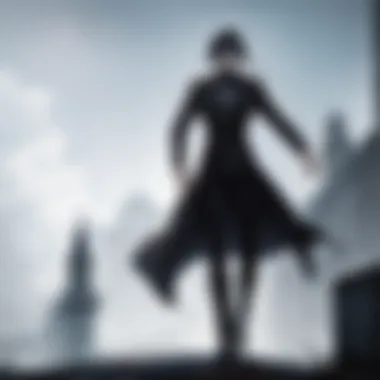
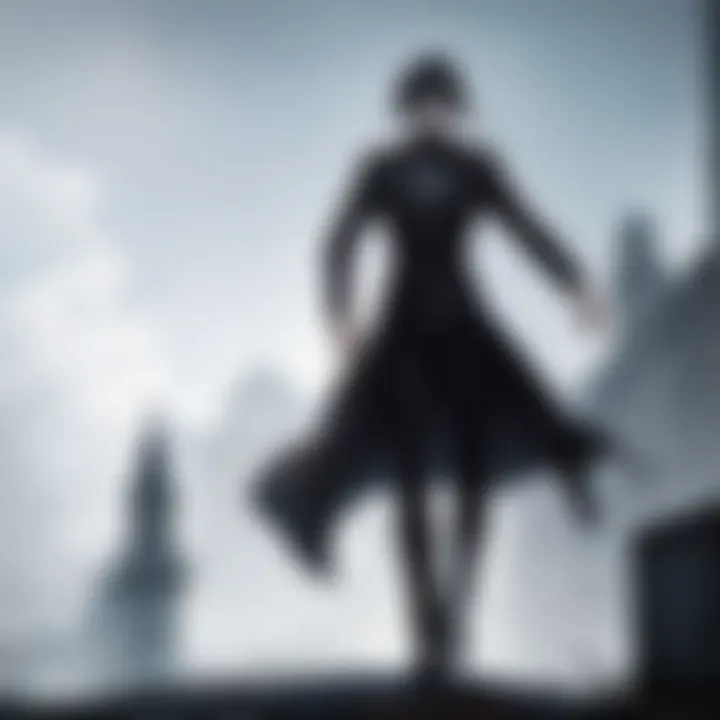
Historical allusions in Hellsing Ultimate also play a crucial role in shaping its storyline. The series is not just a supernatural tale; it intertwines events and figures from history, providing context and significance to its themes. For instance, references to World War II and the Nazi regime are prominently present, representing more than just a historical backdrop. Such elements evoke discussions about power, morality, and the nature of evil itself.
The organization that Hellsing represents reflects historical efforts to combat threats, echoing the real-world dealings in the shadows of society. This connection between history and fiction furthers the moral and philosophical inquiries that the series poses. Characters have their personal histories linked to larger historical narratives, making them more relatable and compelling to the audience.
"Historical allusions enrich narratives by providing context and depth, revealing how the past informs the present."
In summary, the cultural references within Hellsing Ultimate enhance its narrative complexity. By integrating European mythology and historical allusions, the series invites viewers to explore profound questions about humanity, morality, and existence within its narrative framework.
Critical Reception
The exploration of critical reception is essential to understanding the overall impact of 'Hellsing Ultimate' on the anime community and its legacy. This analysis involves evaluating both audience responses and critical reviews that are integral for grasping how the series has been perceived over time. The significance of this topic lies in revealing the various dimensions of feedback the show has elicited, which further informs discussions about its artistic merit, narrative structure, and cultural relevance.
Audience Response
Audience reactions to 'Hellsing Ultimate' have been varied, reflecting a spectrum of emotions and interpretations. Many viewers appreciate the series for its dark aesthetic and faithful adaptation of Kouta Hirano's manga. Fans consistently praise the portrayal of complex characters, such as Alucard and Integra Hellsing, who embody the themes of power and morality. This admiration is often expressed through forums and fan sites, where viewers share their interpretations and experiences with the series.
Notably, social media platforms have played a role in shaping audience perceptions. On platforms like Reddit, discussions highlight how the show's intense action sequences and deep character development resonate with the audience, elevating their engagement. However, some detractors raise concerns about pacing and the graphic violence depicted throughout the episodes. Such critiques indicate a polarized reception, yet this divergence contributes to the ongoing discourse about the series’ appropriateness and execution.
Critical Reviews
Critical reviews of 'Hellsing Ultimate' provide in-depth insights that complement audience perspectives. Many critics acknowledge its high production values, citing the animation quality as a defining feature of the series. The attention to detail in character design and vibrant color palettes has been noted by publications such as Anime News Network and IGN, showcasing the technical achievement behind the visuals.
Critics have also commented on the narrative structure and its alignment with the source material. Some reviews commend the series for its darker tones and intricate storylines, asserting that it captures the essence of the manga well. However, a recurring theme in critical analysis is that not all elements are seamlessly executed, including pacing issues and character arcs that some feel lack resolution.
"Hellsing Ultimate serves as a testament to both the triumphs and struggles of adapting a beloved manga into an anime format. Its reception mirrors the complexities of fandom, where love for the material is often met with critical scrutiny."
The feedback from critics ultimately shapes the viewing experience, influencing new audiences to approach the series with specific expectations. Through this lens, 'Hellsing Ultimate' stands not only as an animated effort but also as a compelling case study in the dialogue between creators, critics, and fans in the anime genre.
Legacy of Hellsing Ultimate
The legacy of Hellsing Ultimate is significant in several aspects. This series not only adapts Kouta Hirano's manga but also transforms it into a medium that shapes the perception of vampires in anime. Its impact resonates through cultural references and stylistic choices that have influenced subsequent works. Moreover, the combination of animation quality, character development, and thematic exploration stands as a benchmark for similar genres.
Impact on Anime Culture
Hellsing Ultimate has left an indelible mark on anime culture. The representation of vampires shifted from traditional portrayals to those that are more complex and morally ambiguous. The intense battles and philosophical undertones are features that have inspired various creators.
- It has contributed to the resurgence of vampire lore within anime, prompting newer series to draw inspiration from its narrative depth and character design.
- The series has also established a standard for horror-themed anime, emphasizing a darker tone that caters to mature audiences.
- This effect is evident in shows like Tokyo Ghoul and Berserk, which embrace similar aesthetics and narrative styles.
In forums and online communities, fans frequently discuss how Hellsing Ultimate's unique take on horror and action influenced their views on storytelling within the genre.
Ongoing Popularity and Fandom
The fanbase for Hellsing Ultimate remains robust even years after its release. This ongoing popularity can be attributed to several factors:
- Merchandising and Media: The series has inspired a wide array of merchandise including figurines, artwork, and collectibles that continue to be sought after by fans.
- Conventions and Community: Events like Anime Expo and conventions in Japan allow fans to showcase their admiration for the series. Cosplay of characters such as Alucard has become a common sight at these gatherings.
- Continued Engagement: Online platforms such as Reddit and Facebook keep discussions alive, with fans sharing fanart, theories, and analyses of the series' themes.
"Hellsing Ultimate retains a magnetic pull on its audience, cultivating a community eager to explore every facet of its legacy."
In summary, the legacy of Hellsing Ultimate is rich with influence on anime culture, as well as an enduring fandom that keeps its spirit alive. The complex themes and formidable characters ensure that it remains a prominent work in the landscape of anime.
The End
The conclusion of this exploration into 'Hellsing Ultimate' aims to underscore the series' significance in the broader context of anime and manga. As a culminating point, it highlights the relationship between the narrative's depth and its impact on viewers. It sheds light on how the themes of power dynamics, mortality, and the exploration of humanity resonate across various audiences.
Final Thoughts on the Series
In evaluating 'Hellsing Ultimate', it is evident that the series transcends simple entertainment. It provokes thought on ethical dilemmas regarding power, morality, and identity. The character arcs, especially that of Alucard, reflect complex motivations and inner conflicts. The show’s violent scenes are intense but serve as a backdrop for deeper philosophical questions.
Moreover, the narrative skills of Kouta Hirano shine throughout the episodes, enriching the viewing experience. The seamless blend of horror and action, alongside the strong character presentations, culminates in a series that remains relevant and engaging. An exploration of 'Hellsing Ultimate' gives insight into how a cohesive storyline can shape a work's legacy, contributing to its sustained popularity in the anime community. With its unique approach, 'Hellsing Ultimate' continues to inspire discussions among fans and newcomers alike.
"Hellsing Ultimate is not merely an adaptation; it is a testament to the depth of storytelling within the fantasy genre."
The lasting influence of 'Hellsing Ultimate' highlights the importance of storytelling in visual media and its ability to resonate well beyond the screen.



